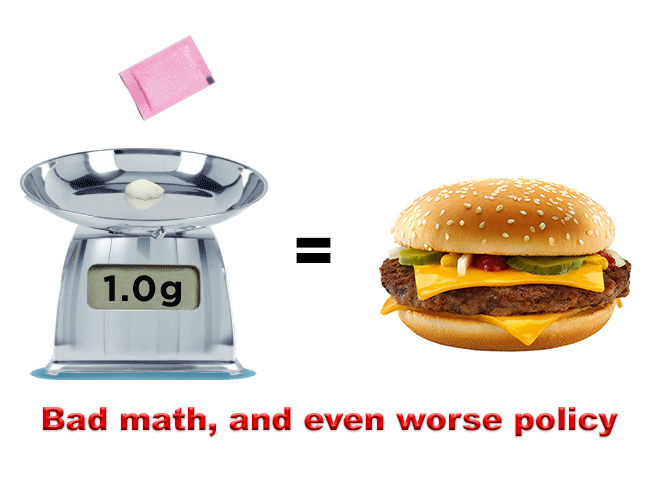We post news and comment on federal criminal justice issues, focused primarily on trial and post-conviction matters, legislative initiatives, and sentencing issues.

MANPOWER AND CORRUPTION WOES CONTINUE TO PLAGUE BOP

The indictment of a fifth Bureau of Prisons employee in connection with the ongoing sexual abuse scandal at FCI Dublin (California) has caused ‘disheartened’ outgoing BOP Director Michael Carvajal to remind all 36,000-plus BOP staff “that we ALL have a responsibility to protect staff and inmates by reporting wrongdoing of any kind, especially misconduct, and we must have the courage to do so.”
According to the indictment unsealed last Friday, Enrique Chavez, a Cook Supervisor/Foreman at Dublin, engaged in abusive sexual contact with inmates in October 2020. Chavez joins former Warden Ray Garcia, former Chaplain James Highhouse, Safety Administrator John Bellhouse, and recycling technician Ross Klinger as defendants in the unfolding FCI Dublin sex abuse scandal.
Chavez’s arrest came only weeks after eight members of Congress, including Rep. Eric Swalwell (D-CA) (whose district includes Dublin), demanded an investigation into allegations of abuse and misconduct at the prison.
Writing in Forbes last week, Walter Pavlo said, “The BOP has a substantive history of corruption, staff shortages and, recently, delays in implementation of The First Step Act… Tens of thousands of prisoners who believe they have earned credits are awaiting a backlogged BOP to determine when they will be released.”
 Pavlo said, “I spoke with Mary Melek, a case manager at FDC Miami who had 364 prisoners on her caseload until a recent hire cut that in half, still over the recommended 150:1 ration. Melek expressed her frustration, ‘There are 5 augmented openings on a shift, openings where the BOP has planned augmentation, and that has pulled me away from my work’. The augmentation not only applies to case managers, but other workers, including health services where FDC Miami is at 56% of its staffing rate.”
Pavlo said, “I spoke with Mary Melek, a case manager at FDC Miami who had 364 prisoners on her caseload until a recent hire cut that in half, still over the recommended 150:1 ration. Melek expressed her frustration, ‘There are 5 augmented openings on a shift, openings where the BOP has planned augmentation, and that has pulled me away from my work’. The augmentation not only applies to case managers, but other workers, including health services where FDC Miami is at 56% of its staffing rate.”
Help could be on the way to the BOP in the form of money. The recently-passed FY2022 omnibus spending bill included $7.865 billion for BOP salaries and expenses, a $200 million dollar increase over the agency’s requested funding. According to a press release from AFGE National Council President Shane Fausey, the BOP is “expected to hire additional full-time correctional officers in order to reduce the reliance on augmentation and improve staffing beyond mission-critical levels in custodial and all other departments, including medical, counseling, and educational positions.”
President Biden’s proposed budget for next year, released last week, asks for even more: $8.18 billion “to ensure the health, safety, and wellbeing of incarcerated individuals and correctional staff; fully implement the First Step Act and ease barriers to successful reentry,” according to the DOJ.
 The money, of course, does not address the recent spate of corruption. Carvajal said in last week’s internal communication to BOP staff that “the recent media attention regarding misconduct in the BOP as being characterized using phrases such as “cover-ups,” “sign of a larger problem” and “toxic culture of sexual abuse.” These phrases are not true characterizations of the vast majority of the staff who work in our facilities across the Nation.”
The money, of course, does not address the recent spate of corruption. Carvajal said in last week’s internal communication to BOP staff that “the recent media attention regarding misconduct in the BOP as being characterized using phrases such as “cover-ups,” “sign of a larger problem” and “toxic culture of sexual abuse.” These phrases are not true characterizations of the vast majority of the staff who work in our facilities across the Nation.”
Of course not. That is, unless you read the inmate email I get. Walter Pavlo seems to feel the same, writing that “Carvajal could have noted that since his rising to the agency’s highest position” a House subcommittee investigation found that BOP “discipline and accountability is not equitably applied … For high ranking officers, bad behavior is ignored or covered up on a regular basis, and certain officials who should be investigated can avoid discipline.”
DOJ, Correctional Officer At FCI Dublin Charged For Abusive Sexual Contact With Female Inmate (March 23, 2022)
Pleasanton Weekly, Another guard at Dublin prison charged with sex abuse of inmate (March 28, 2022)
Forbes, ‘Disheartened’ Director Of Bureau Of Prisons Calls On Staff To Out Corruption (March 31, 2022)
DOJ, Department of Justice Fiscal Year 2023 Funding Request (March 28, 2022)
Forbes, Bureau Of Prisons Is Overworking Its Most Critical Staff Positions During First Step Act Implementation (March 31, 2022)
– Thomas L. Root


























